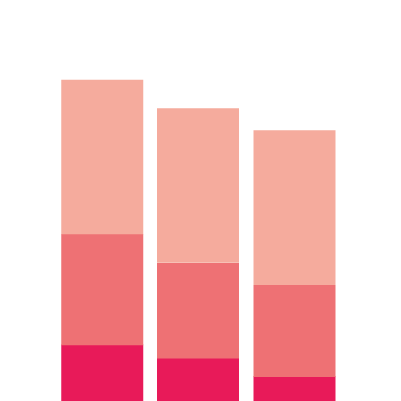Money and resources can affect health in a number of ways. People need a certain level of income to be able to afford the basics for a healthy life, such as food and quality housing.
Beyond a basic level of income, stresses still exist and can eventually harm physical health. Even once a basic level of income has been achieved, earning more money is better, as it enables people to have more choice, and this often means they have access to healthier options.
This chart shows UK adults aged 64 years and under by their self-rated health, grouped into 10 equal-sized bands (deciles) based on their household income in 2021/22.
Across the entire income distribution, higher income is associated with better health.Nearly 2 in 5 adults (18%) on the lowest incomes report having ‘bad’ or ‘very bad’ health, compared with 2 in 100 (1.7%) on the highest incomes. Including data for ‘fair’ health (the category below ‘good’ health), 44% of people on the lowest incomes report less than good health, compared with 25% in the middle two deciles (5th and 6th) and 12% on the highest incomes.
Self-rated health is a measure of health on a five-point scale from ‘very good’ to ‘very bad’. Other options include ‘good’, ‘fair’ and ‘bad’.Income deciles are calculated by ordering incomes from lowest to highest across the distribution and dividing them into 10 equal groups. Decile 1 represents the lowest 10% of incomes, while decile 10 represents the highest 10% of incomes. Income is adjusted for household size to reflect economies of scale: for example, a household of four needs more income for the same standard of living as a household of one, but not four times as much. Housing costs are deducted from income, to reflect that people with lower incomes in particular have fewer options for meeting their housing costs, relative to their income.
Source: Department for Work and Pensions, Family Resources Survey, UK 2021/22

